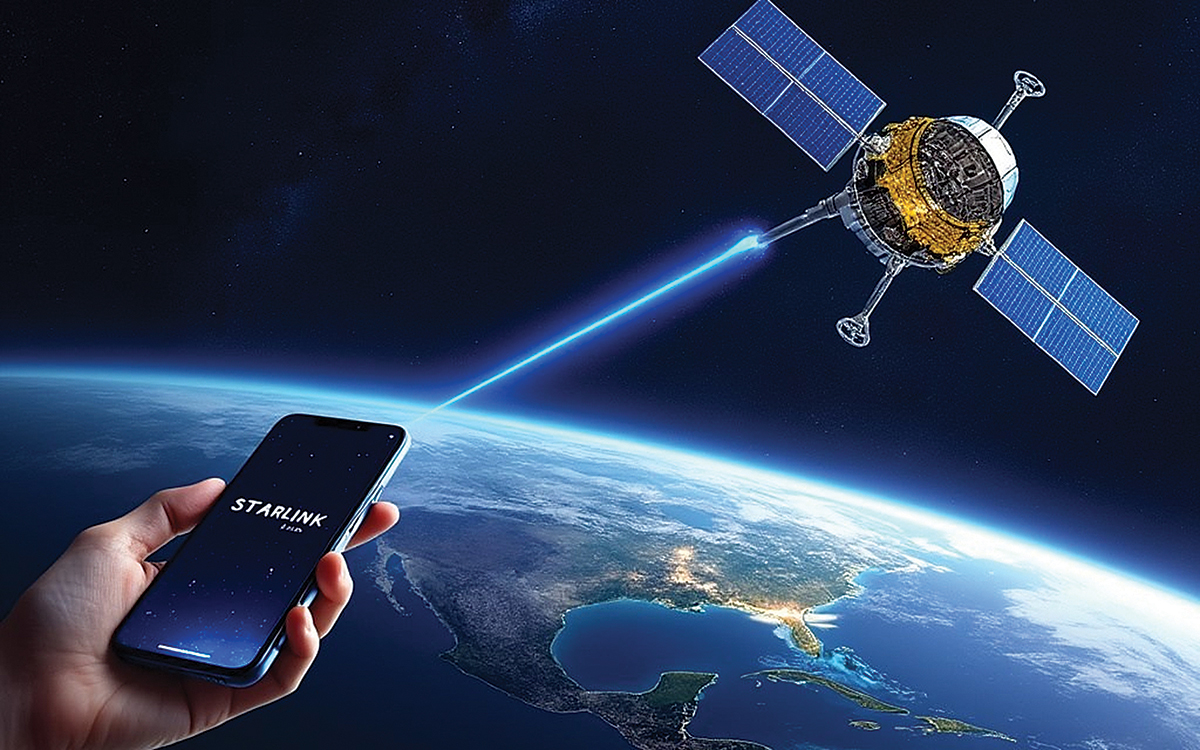
Nepal’s mountainous terrain and scattered population have long posed challenges for traditional telecommunications providers leaving many rural areas with little to no connectivity. This digital divide has limited economic growth, education and healthcare opportunities in these regions. The arrival of Elon Musk’s Starlink, SpaceX’s satellite internet service, could be a game-changer for Nepal, promising high-speed, low-latency internet that can reach even the remotest locations.
Starlink’s interest in Nepal has garnered significant attention, raising hopes, questions and some concerns about the feasibility and implications of its operation in the country.
The buzz around Starlink’s entry into Nepal gained momentum after a series of high-profile meetings in 2024. In July, Rebecca Slick Hunter, Starlink’s Global Market Access Director, accompanied by US Ambassador Dean R Thompson, met with Nepal’s Minister of Communications and Information Technology, Prithvi Subba Gurung. The duo expressed Starlink’s interest in operating in Nepal. The discussions culminated with Starlink delivering a presentation to Prime Minister KP Sharma Oli, outlining their plans and technological capabilities. A few months later, in November, Elon Musk himself held a virtual meeting with Prime Minister Oli, emphasising his desire to expand Starlink’s services in Nepal and highlighting its potential to transform Nepal’s digital infrastructure.
Traditional internet infrastructure relies on fibre-optic cables or mobile towers, which are difficult and costly to instal in rugged terrains. Starlink’s satellites, orbiting closer to Earth than traditional geostationary satellites, can bypass these obstacles, delivering consistent internet connectivity across the country.
Starlink’s approach to connectivity, leveraging low-earth orbit (LEO) satellites, is particularly appealing to countries like Nepal. Traditional internet infrastructure relies on fibre-optic cables or mobile towers, which are difficult and costly to instal in rugged terrains. Starlink’s satellites, orbiting closer to Earth than traditional geostationary satellites, can bypass these obstacles, delivering consistent internet connectivity across the country. This would be especially beneficial in Nepal’s rural areas, where many communities are still disconnected from the global digital economy.
While Starlink’s arrival would be widely welcomed, it also raises geopolitical concerns. Given the proximity of Nepal to both China and India, the introduction of a US-based satellite internet provider is being closely monitored by neighbouring countries. Both nations view Starlink’s advanced satellite technology as a potential security concern. For instance, satellites capable of high-resolution imaging and data transmission could inadvertently - or intentionally - collect sensitive information. These concerns add a layer of complexity to Nepal’s decision-making process, as the country must balance its sovereignty and diplomatic relations while embracing technological advancements.
Nepal’s Telecommunications Act, which mandates that foreign telecom companies form partnerships with local entities, poses another challenge for Starlink’s entry. The law requires foreign investment to be capped at 80% with the remaining 20% controlled by local partners. Starlink’s reluctance to share ownership or align with such regulations could delay or derail its plans for Nepal. Minister Gurung has made it clear that compliance with national laws is non-negotiable, indicating that regulatory hurdles remain a significant barrier.
If successfully implemented, Starlink’s services could unlock tremendous economic potential in Nepal. Improved internet access would benefit several sectors, including education, healthcare and tourism. Remote schools could gain access to online resources, hospitals could connect with global medical experts, and tourism operators could offer better connectivity to adventure seekers in remote trekking regions. Enhanced connectivity would also allow small and medium-sized enterprises (SMEs) to participate in global markets, potentially increasing Nepal’s exports and boosting its economy.
Despite its promise, the cost of Starlink’s services remain a concern. Currently, the equipment required for Starlink’s service, including the satellite dish, costs several hundred dollars, with monthly fees ranging from $99 to $120 in most markets. For a country like Nepal, where many citizens earn less than $5 per day, this pricing is unaffordable for a significant portion of the population. Without subsidies or pricing models tailored to low-income users, Starlink risks becoming a service accessible only to Nepal’s urban elite.
The sudden availability of high-speed internet in remote areas could have unforeseen social and cultural consequences. Other regions that adopted Starlink-like services have reported issues such as exposure to inappropriate content, misinformation and online scams. These risks underline the importance of parallel investments in digital literacy programmes to ensure that communities can use the internet safely and responsibly. Such initiatives would help mitigate the negative impacts of rapid digital transformation.
Globally, Starlink has faced mixed responses. In countries like Brazil, where internet access in the Amazon region has expanded significantly, there are concerns about monopolistic behaviour and the company’s dominance over critical communication infrastructure. Similarly, in Africa, governments have raised concerns about Starlink’s impact on local telecom providers and its potential to disrupt the local economy. Nepal could draw lessons from these experiences to shape its policies, ensuring that Starlink’s services complement rather than compete with local providers.
Starlink’s interest in Nepal represents a significant opportunity to bridge the digital divide and propel the nation into a more connected future. However, its entry is not without challenges, ranging from regulatory compliance and geopolitical concerns to affordability and social implications. The government, private sector and civil society must work together to ensure that Starlink’s presence in Nepal delivers maximum benefits while minimising risks. With careful planning and collaboration, Nepal could leverage Starlink’s technology to achieve a digital transformation that empowers all its citizens.





